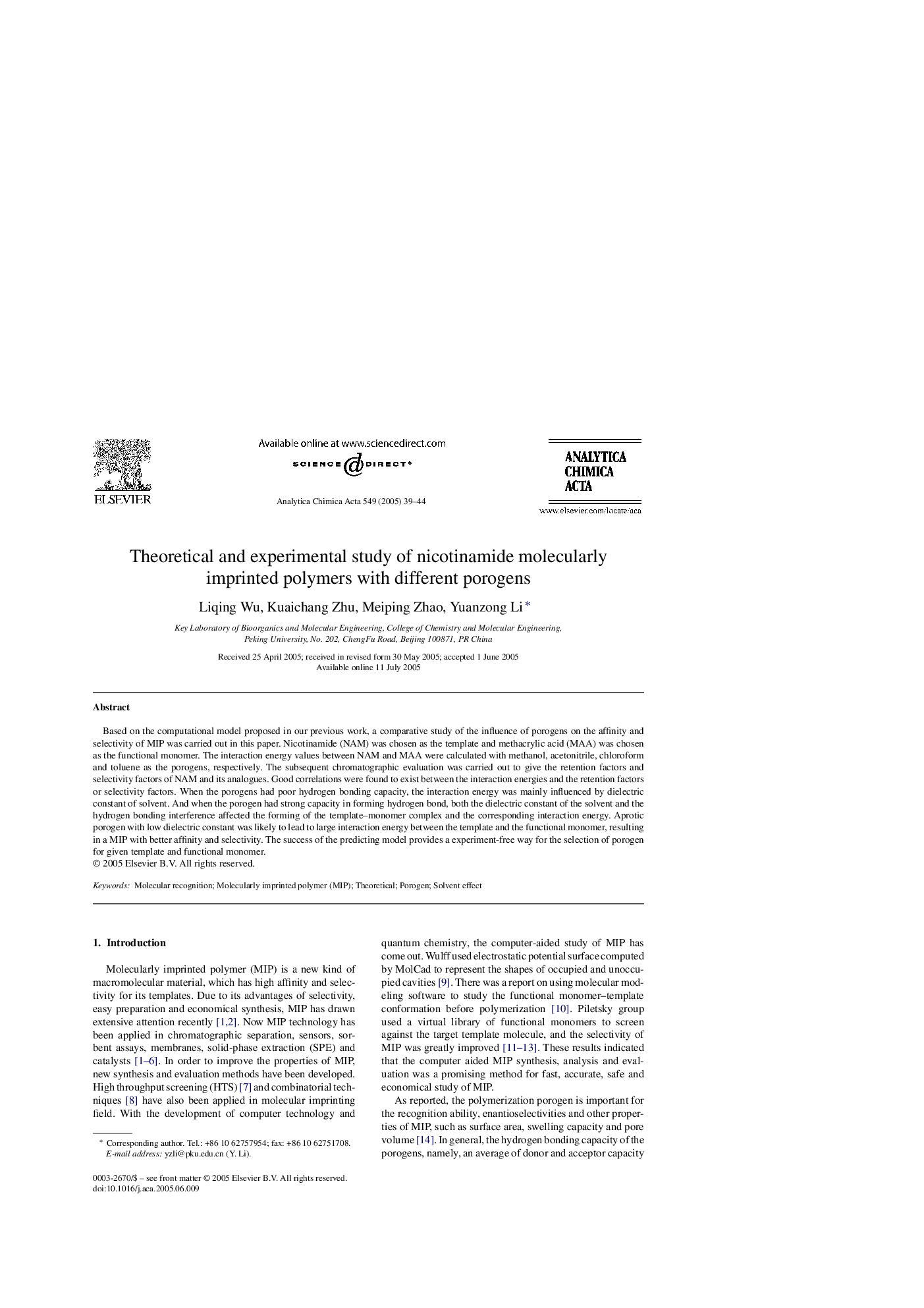| Article ID | Journal | Published Year | Pages | File Type |
|---|---|---|---|---|
| 9743457 | Analytica Chimica Acta | 2005 | 6 Pages |
Abstract
Based on the computational model proposed in our previous work, a comparative study of the influence of porogens on the affinity and selectivity of MIP was carried out in this paper. Nicotinamide (NAM) was chosen as the template and methacrylic acid (MAA) was chosen as the functional monomer. The interaction energy values between NAM and MAA were calculated with methanol, acetonitrile, chloroform and toluene as the porogens, respectively. The subsequent chromatographic evaluation was carried out to give the retention factors and selectivity factors of NAM and its analogues. Good correlations were found to exist between the interaction energies and the retention factors or selectivity factors. When the porogens had poor hydrogen bonding capacity, the interaction energy was mainly influenced by dielectric constant of solvent. And when the porogen had strong capacity in forming hydrogen bond, both the dielectric constant of the solvent and the hydrogen bonding interference affected the forming of the template-monomer complex and the corresponding interaction energy. Aprotic porogen with low dielectric constant was likely to lead to large interaction energy between the template and the functional monomer, resulting in a MIP with better affinity and selectivity. The success of the predicting model provides a experiment-free way for the selection of porogen for given template and functional monomer.
Related Topics
Physical Sciences and Engineering
Chemistry
Analytical Chemistry
Authors
Liqing Wu, Kuaichang Zhu, Meiping Zhao, Yuanzong Li,
